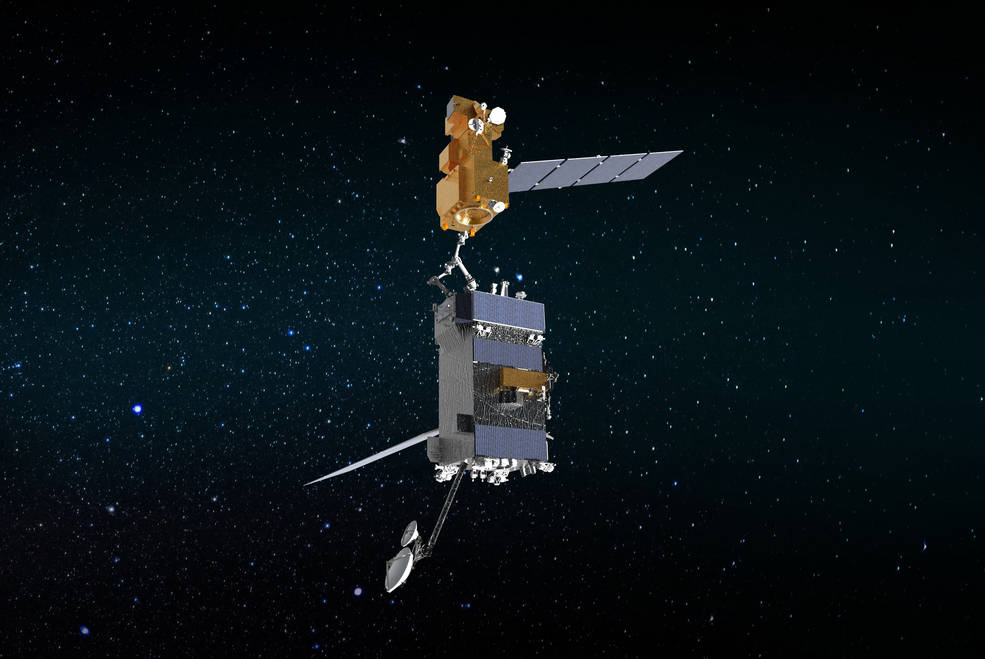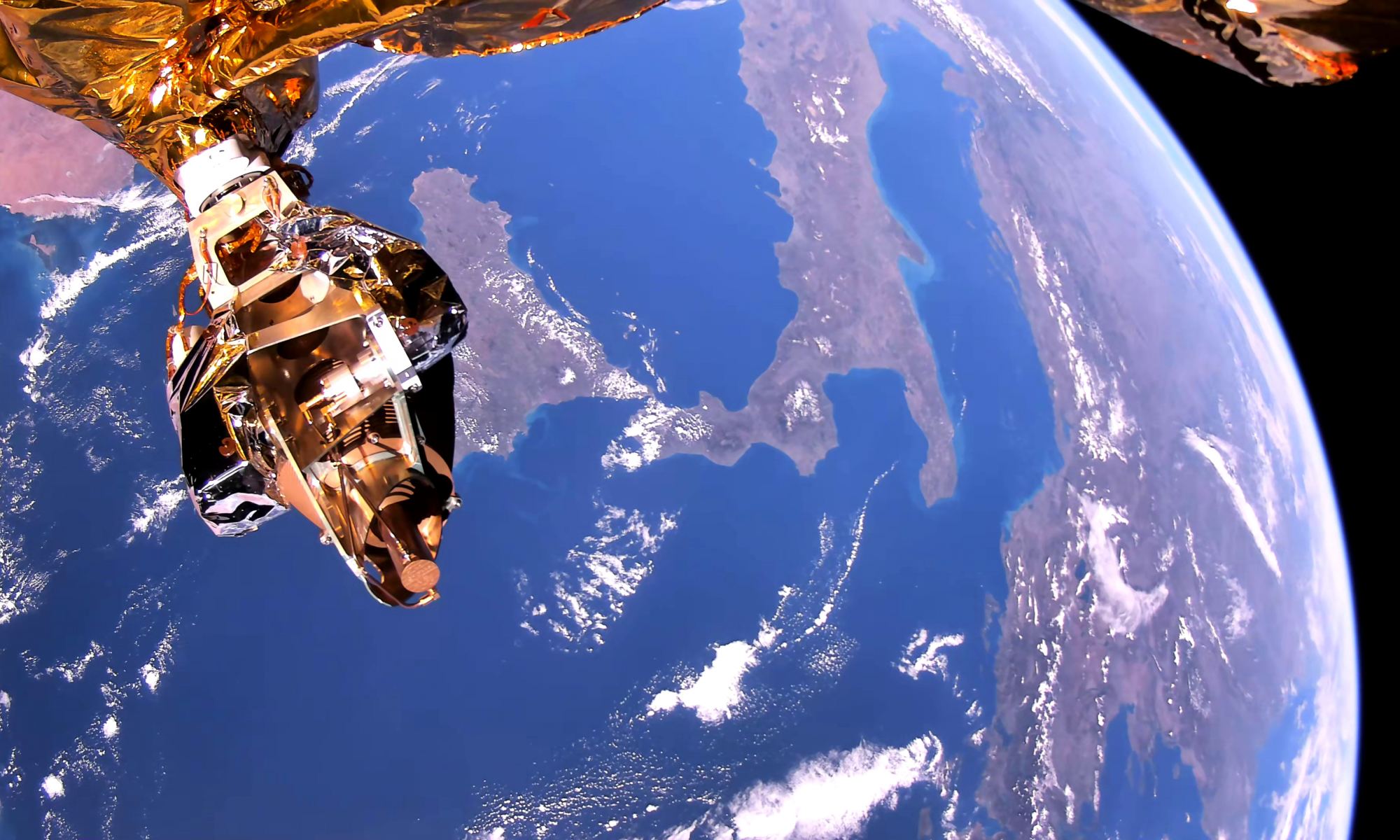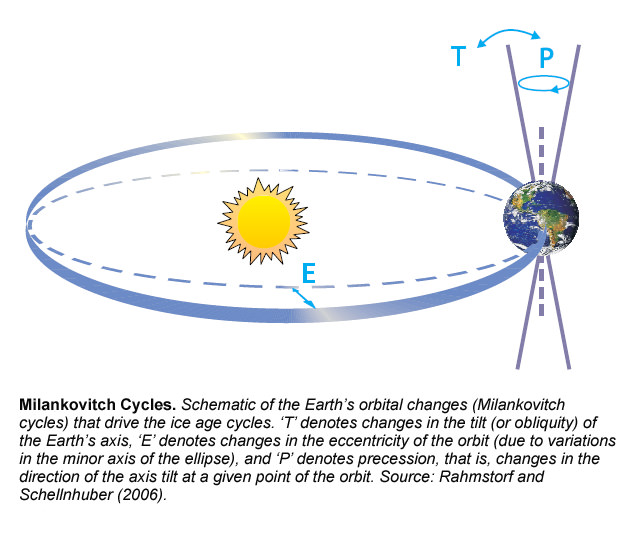NASA is planning a mission to demonstrate the ability to repair and upgrade satellites in Earth orbit. The mission, called OSAM-1 (On-orbit Servicing, Assembly, and Manufacturing-1), will send a robotic spacecraft equipped with robotic arms and all the tools and equipment needed to fix, refuel or extend satellites’ lifespans, even if those satellites were not designed to be serviced on orbit.
Continue reading “NASA is Building a Mission That Will Refuel and Repair Satellites in Orbit”Sen has Launched a 4K Video Stream to Space
In 2014, British entrepreneur Charles Black founded the company Sen (an acronym for Space Exploration Network) with the vision of “democratizing space”. Behind this vision was Black’s desire to create the world’s first 4K video streaming platform that could send video from space to billions of people worldwide. The purpose of this is to educate the public on our ever-changing world and our growing presence in space.
The key to this ambitious goal is the creation of a constellation of small satellites that will provide real-time video from Low Earth Orbit (LEO). The company recently took a major step towards making that happen by using their recently-deployed satellite to gather footage of Earth and space from orbit. This effectively demonstrated the capabilities of their platform and may represent a new step in NewSpace.
Continue reading “Sen has Launched a 4K Video Stream to Space”When Will Mars Be Close to Earth?
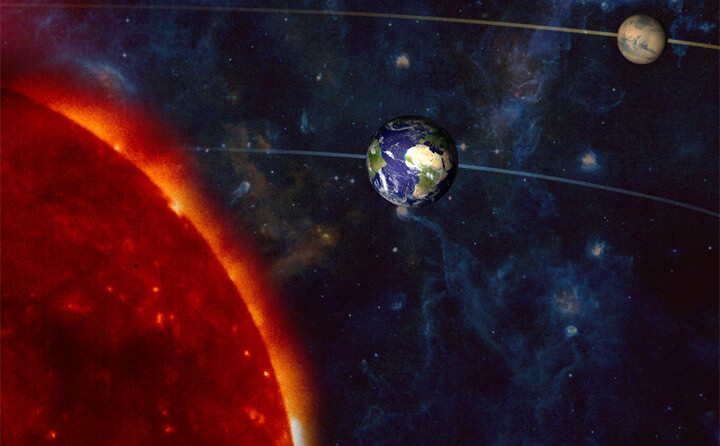
As neighboring planets, Earth and Mars have a few things in common. Both are terrestrial in nature (i.e. rocky), both have tilted axes, and both orbit the Sun within its circumstellar habitable zone. And during the course of their orbital periods (i.e. a year), both planets experience variations in temperature and changes in their seasonal weather patterns.
However, owing to their different orbital periods, a year on Mars is significantly longer than a year on Earth – almost twice as long, in fact. And because their orbits are different, the distance between our two planets varies considerably. Basically, every two years Earth and Mars will go from being “at conjunction” (where they are farther from each other) to being “at opposition” (where they are closer to each other).
Orbital Period:
Earth orbits the Sun at an average distance (semi-major axis) of 149,598,023 km (92,955,902 mi; or 1 AU), ranging from 147,095,000 km (91,401,000 mi) at perihelion to 152,100,000 km (94,500,000 mi) at aphelion. At this distance, and with an orbital velocity of 29.78 km/s (18.5 mi/s) the time it take for the planet to complete a single orbit of the Sun (i.e. orbital period) is equal to about 365.25 days.

Mars, meanwhile, orbits the Sun at an average distance of 227,939,200 km (141,634,850 mi; or 1.523679 AU), ranging from 206,700,000 km (128,437,425 mi) at perihelion to 249,200,000 km (154,845,700 mi) at aphelion. Given this difference in distance, Mars orbits the Sun at a slower speed (24.077 km/s; 14.96 mi/s) and takes about 687 Earth days (or 668.59 Mars sols) to complete a single orbit.
In other words, a Martian year is almost 700 days long, which works out to being 1.88 times as long as a year on Earth. This means that every time Mars completes a single orbit around the Sun, the Earth has gone around almost twice. During the moments when they are on opposite sides of the Sun, this is known as a “conjunction”. When they are on the same side of the Sun, they are at “opposition”.
Mars Opposition:
By definition, a “Mars opposition” occurs when planet Earth passes in between the Sun and planet Mars. The term refers to the fact that Mars and the Sun appear on opposite sides of the sky. Because of their orbits, Mars oppositions happens about every 2 years and 2 months – 779.94 Earth days to be precise. From our perspective here on Earth, Mars appears to be rising in the east just as the Sun sets in the west.
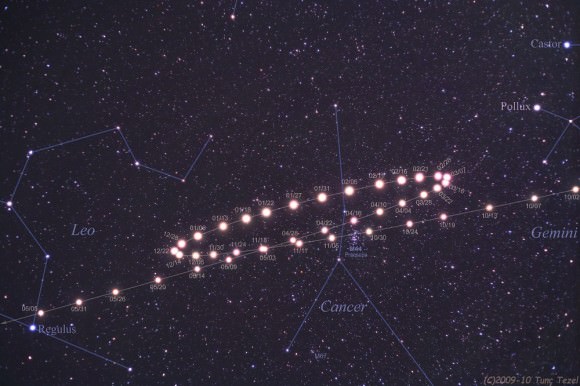
After staying up in the sky for the entire night, Mars then sets in the west just as the Sun begins to rise in the east. During an opposition, Mars becomes one of the brightest objects in the night sky, and is easy to see with the naked eye. Through small telescopes, it will appear as a large and bright object. Through larger telescopes, Mars’ surface features will even become apparent, which would include its polar ice caps.
An opposition can also occur anywhere along Mars’ orbit. However, opposition does not necessary mean that the two planets are at their closest overall. In truth, it just means that they are are at their closest point to each other within their current orbital period. If Earth and Mars’ orbits were perfectly circular, they would be closest to each other whenever they were at opposition.
Instead, their orbits are elliptical, and Mars’ orbit is more elliptical than Earth’s – which means the difference between their respective perihelion and aphelion is greater. Gravitational tugging from other planets constantly changes the shape of our orbits too – with Jupiter pulling on Mars and Venus and Mercury affecting Earth.
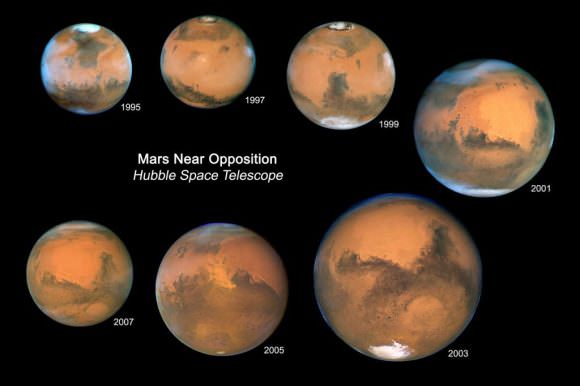
Lastly, Earth and Mars do not orbit the Sun on the exact same plane – i.e. their orbits are slightly tilted relative to each other. Because of this, Mars and Earth become closest to each other only over the long-term. For instance, every 15 or 17 years, an opposition will occur within a few weeks of Mars’ perihelion. When it happens while the Mars is closest to the sun (called “perihelic opposition”), Mars and Earth get particularly close.
And yet, the closest approaches between the two planets only take place over the course of centuries, and some are always closer than others. To make matters even more confusing, over the past few centuries, Mars’ orbit has been getting more and more elongated, carrying the planet even nearer to the Sun at perihelion and even farther away at aphelion. So future perihelic oppositions will bring Earth and Mars even closer.
On August 28th, 2003, astronomers estimated that Earth and Mars were just 55,758,118 km (34,646,488 mi; 0.37272 AU) apart. This was the closest the two planets had come to each other in almost 60,000 years. This record will stand until August 28th, 2287, at which point the planets will be an estimated 55,688,405 km (34,603,170.6 mi; 0.372254 AU) from each other.
Future Oppositions:
Want to organize your schedule for the next time Mars will be close to Earth? Here are some upcoming dates, covering the next few decades. Plan accordingly!
- July 27th, 2018
- October 13th, 2020
- December 8th, 2022
- January 16th, 2025
- February 19th, 2027
- Mar 25th, 2029
- May 4th, 2031
- June 27th, 2033
- September 15th, 2035
- November 19th, 2037
- January 2nd, 2040
- February 6th, 2042
- March 11th, 2044
- April 17th, 2046
- June 3rd, 2048
- August 14th, 2050
And in case your interested, Mars will be making close approaches on two occasions this century. The first will take place on August 14th, 2050, when Mars and Earth will be 55.957 million km (34.77 million mi; or 0.374051 AU) apart; and on September 1st, 2082, when they will be 55,883,780 km (34,724,571 mi; 0.373564 AU) apart.
There’s a reason missions to Mars depart from Earth every two years. Seeking to take advantage of shorter travel times, rovers, orbiters and landers are launched to coincide with Mars being at opposition. And when it comes time to send crewed mission to Mars (or even settlers) the same timing will apply!
We have written many interesting articles about Mars here at Universe Today. Here’s How Far is Mars from Earth?, How Long Does it Take to Get to Mars?, How Long is a Year on Mars?, How Far is Mars from the Sun?, and How Long Does it Take Mars to Orbit the Sun?
For more information, here’s a comprehensive schedule of upcoming Mars oppositions.
Astronomy Cast also has some wonderful episodes on the Red Planet. Here’s Episode 52: Mars, and Episode 91: The Search for Water on Mars.
Sources:
An Astronomical Perspective on Climate Change
Ice cores and deep sea bed cores provide the best available record of changes in global temperature and CO2 content of the atmosphere going back 800,000 years. The data shows a clear periodicity in global temperatures which is thought to be linked to the Milankovitch cycle.
Back in 1920, Milutin Milankovitch, a Serbian mathematician, proposed that fine changes in Earth’s orbit around the Sun could explain an approximately 100,000 year cycle in glaciation seen from geological evidence. The tilt of the Earth’s axis swings slightly over a 41,000 year cycle – the eccentricity of Earth’s orbit moves from almost circular to more elliptical and back again over a 413,000 year cycle – and overlaying that you have not only the precession of the equinoxes, which is an inherent wobble in the Earth’s axial spin over a 26,000 year cycle, but also a precession of the whole of Earth’s orbit over a 23,000 year cycle.
Ice core data does show a rough concordance between glaciation and the synchronicity of these orbital cycles. Even though there’s no significant change in the mean amount of solar radiation reaching the Earth over the period of its annual orbit – the orbital changes can lead to increased polar shadowing and cooling.
Once ice does start advancing from the poles, a positive feedback loop can develop – since more ice increases the albedo of Earth’s surface and reflects more of the Sun’s heat back into space, thus reducing mean global temperatures.
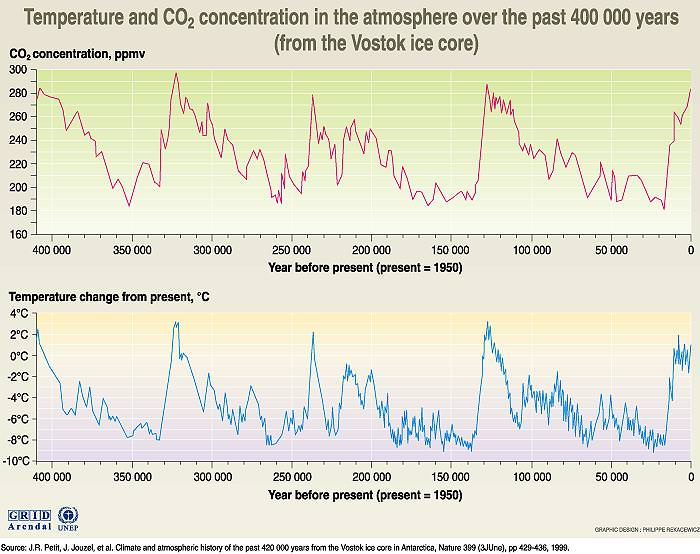 It’s thought that what limits the ice advancing is increasing CO2 in the atmosphere – which can be measured from trapped bubbles of air in the ice cores. More ice formation leads to less exposed land area for photosynthesis and silicate rock weathering to remove CO2 from the atmosphere. So the more ice that’s formed, the more CO2 accumulates in the atmosphere – which causes mean global temperatures to rise, which limits ongoing ice formation.
It’s thought that what limits the ice advancing is increasing CO2 in the atmosphere – which can be measured from trapped bubbles of air in the ice cores. More ice formation leads to less exposed land area for photosynthesis and silicate rock weathering to remove CO2 from the atmosphere. So the more ice that’s formed, the more CO2 accumulates in the atmosphere – which causes mean global temperatures to rise, which limits ongoing ice formation.
Of course the opposite is true in an ice-melting phase. Ice melting also follows a positive feedback loop since less ice means less albedo, meaning less solar radiation is reflected back into space and mean global temperatures rise. But again, CO2 becomes the limiting factor. With more exposed land, more CO2 is drawn from the atmosphere by photosynthesizing forests and rock weathering. A consequent drop in atmospheric CO2 cools the planet and hence limits ongoing ice melting.
But there lies the rub. We are in an ice-melting phase of the Milankovitch cycle now, where the Earth’s orbit is closer to circular and the Earth’s tilt is closer to perpendicular. But CO2 levels aren’t declining – partly because we’ve chopped a lot of trees and forests down, but mostly because of anthropogenic CO2 production. Without the limiting factor of declining CO2 we’ve seen in previous Milankovitch cycles, presumably the ice is just going to keep on melting as the albedo of the Earth surface declines.
 So you might want to rethink that next coastal real estate purchase – or hope for the best from Copenhagen.
So you might want to rethink that next coastal real estate purchase – or hope for the best from Copenhagen.
Milankovitch Cycle

Milankovitch cycles. Source: UCAR
A Milankovitch cycle is a cyclical movement related to the Earth’s orbit around the Sun. There are three of them: eccentricity, axial tilt, and precession. According to the Milankovitch Theory, these three cycles combine to affect the amount of solar heat that’s incident on the Earth’s surface and subsequently influence climatic patterns.
Eccentricity
The path of the Earth’s orbit around the sun is not a perfect circle, but an ellipse. This elliptical shape changes from less elliptical (nearly a perfect circle) to more elliptical and back, and is due to the gravitational fields of neighboring planets (particularly the large ones – Jupiter and Saturn). The measure of the shape’s deviation from being a circle is called its eccentricity.
That is, the larger the eccentricity, the greater is its deviation from a circle. Thus, in terms of eccentricity, the Earth’s orbit undergoes a cyclical change from less eccentric to more eccentric and back. One complete cycle for this kind of variation lasts for about 100,000 years.
Axial Tilt
We know the earth is spinning around its own axis, which is the reason why we have night and day. However, this axis is not upright. Rather, it tilts at angles between 22.1-degrees and 24.5 degrees and back. These angles are measured between the angle of the axis to an imaginary line normal (perpendicular) to the Earth’s plane of orbit. A complete cycle for the axial tilt lasts for about 41,000 years.
Greater tilts mean that the hemispheres closer to the Sun, i.e., during summer, will experience a larger amount of heat than when the tilt is less. In other words, regions in the extreme upper and lower hemispheres will experience the hottest summers and the coldest winters during a maximum tilt.
Precession
Aside from the tilt, the axis also wobbles like a top. A complete wobble cycle is more or less 26,000 years. This motion is caused by tidal forces from the Sun and Moon.
Precession as well as tilting are the reasons why regions near and at the poles experience very long nights and very long days at certain times of the year. For example, in Norway, the Sun never completely descends beneath the horizon between late May to late July.
The Milankovitch Cycles are among the arguments fielded by detractors of the Global Warming concept. According to them, the Earth’s current warming is just a part of a series of cyclical events that take thousands of years to complete, and hence cannot be prevented.
You can read more about milankovitch cycle here in Universe Today. Here are the links:
- Solar Variability Most Likely Not the Cause of Global Warming
- Researchers Say Sun Cycle Alters Earth’s Climate
There’s more about it at USGS and NASA. Here are a couple of sources there:
Here are two episodes at Astronomy Cast that you might want to check out as well:
References:
NASA Earth Observatory
NOAA Website

